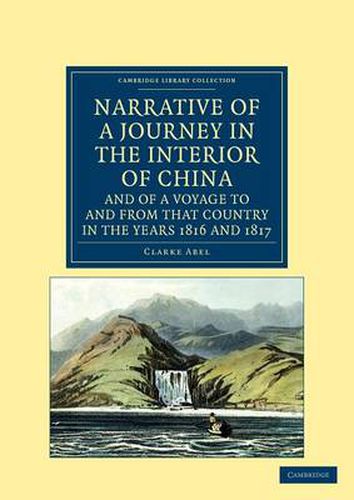Readings Newsletter
Become a Readings Member to make your shopping experience even easier.
Sign in or sign up for free!
You’re not far away from qualifying for FREE standard shipping within Australia
You’ve qualified for FREE standard shipping within Australia
The cart is loading…






Clarke Abel (c.1780-1825) was Chief Medical Officer accompanying Lord Amherst’s unsuccessful diplomatic embassy to China in 1816. Encouraged by Sir Joseph Banks, he acted as official naturalist to the expedition, which penetrated further into China than had been possible for previous western visitors. Although most of his large collection of botanical and mineralogical specimens was lost during the return voyage, survivals included several new species, some of which were named after him. This work, published in 1818, made Abel’s reputation, and he was elected to the Royal Society the following year. His geological survey of the Cape of Good Hope, studied on the outward journey, is particularly impressive. Abel’s account of Chinese society and culture is an important record of a country which was then largely inaccessible to Europeans. An appendix by Robert Brown (Banks’ botanist) lists the specimens that survived the shipwreck, which is itself dramatically described.
$9.00 standard shipping within Australia
FREE standard shipping within Australia for orders over $100.00
Express & International shipping calculated at checkout
Stock availability can be subject to change without notice. We recommend calling the shop or contacting our online team to check availability of low stock items. Please see our Shopping Online page for more details.
Clarke Abel (c.1780-1825) was Chief Medical Officer accompanying Lord Amherst’s unsuccessful diplomatic embassy to China in 1816. Encouraged by Sir Joseph Banks, he acted as official naturalist to the expedition, which penetrated further into China than had been possible for previous western visitors. Although most of his large collection of botanical and mineralogical specimens was lost during the return voyage, survivals included several new species, some of which were named after him. This work, published in 1818, made Abel’s reputation, and he was elected to the Royal Society the following year. His geological survey of the Cape of Good Hope, studied on the outward journey, is particularly impressive. Abel’s account of Chinese society and culture is an important record of a country which was then largely inaccessible to Europeans. An appendix by Robert Brown (Banks’ botanist) lists the specimens that survived the shipwreck, which is itself dramatically described.